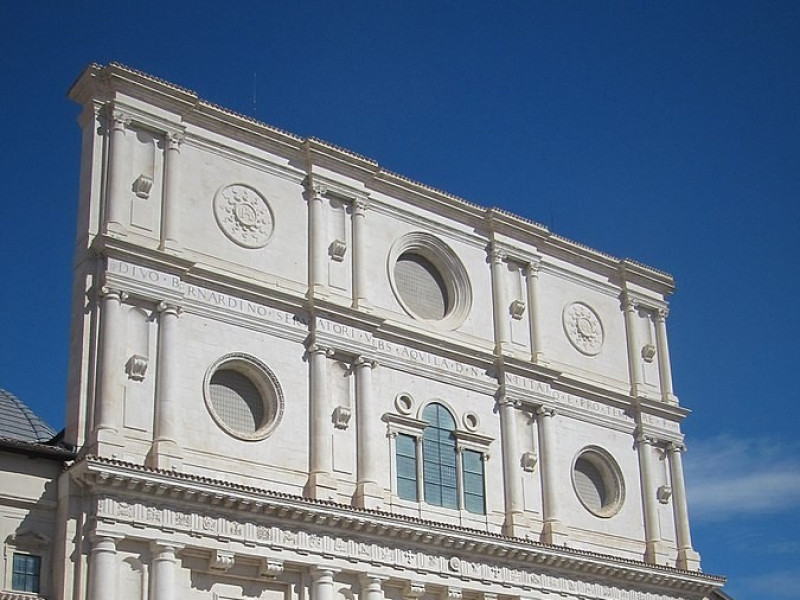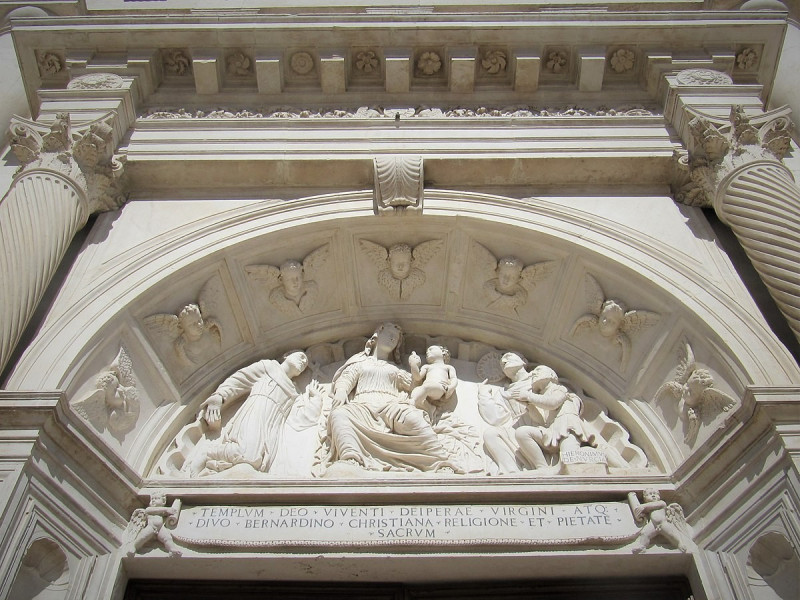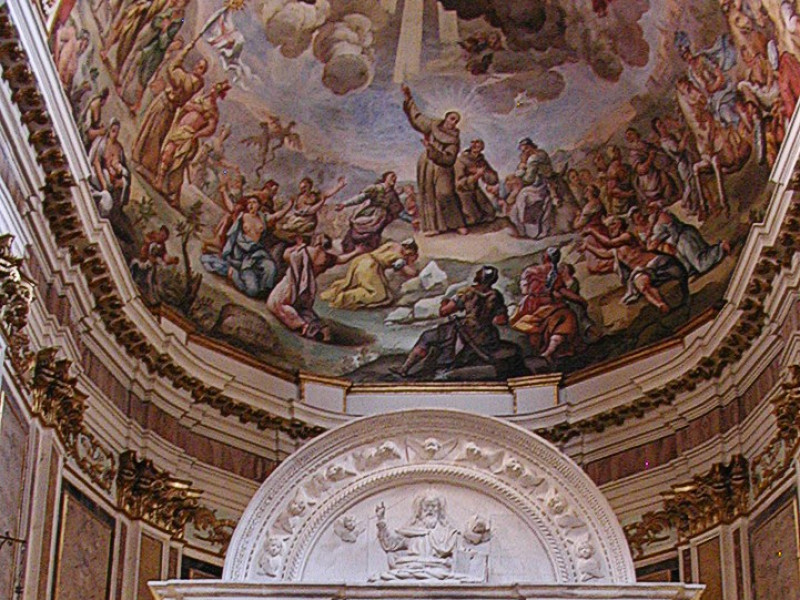Basilica di San Bernardino
It was built, with adjacent convent, between 1454 and 1472 in honor of San Bernardino da Siena, whose remains are kept inside Mausoleum built by Silvestro dell'Aquila. The facade, with Michelangelesque influences, is considered the highest expression of Renaissance architecture in Abruzzo. The interior, in Baroque style, is due to the reconstruction of the building following the earthquake of 1703 by several designers and Serbian important works of art by Andrea della Robbia, Francesco Bedeschini, Pompeo Cesura, Rinaldo Fiammingo and Donato Teodoro. The carved wooden ceiling adorned with pure gold is the work of Ferdinando Mosca. Basilica was declared "National Monument" in 1902. Following the earthquake of 2009, which severely damaged the apse and the bell tower, Basilica underwent repairs and consolidation and was reopened in 2015. External cladding dates back to the fifteenth century, Basilica rises to the height of a monumental staircase flanked by six aedicules, each one of the six families who contributed to the construction of the building. The facade, among the most remarkable in Italy, is the major work of Cola dell'Amatrice, which here sums up Florentine, Urbino and Roman influences. As in the scheme of the churches of L'Aquila, it is subdivided into the three orders (Doric, Ionic and Corinthian). The bell tower, on the right front of Basilica, was built in the fifteenth century and rebuilt after the 2009 earthquake. Central nave is the most important, characterized by magnificent carved wooden coffered ceiling decorated with pure gold by Ferdinando Mosca (1723-27), inside which there are three paintings by Girolamo Cenatiempo. San Bernarino's Chapel is the fourth on the right and houses his Mausoleum, a large ark on a square base, in stone covered with marble. The body of Bernardino da Siena is placed in a silver and golden wooden urn made in 1799 by Giuseppe Mantini of Mantua.





